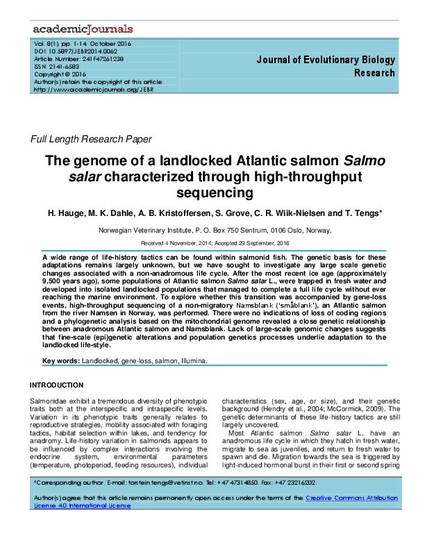
Article
The genome of a landlocked Atlantic salmon Salmo salar characterized through high-throughput sequencing
Journal of Evolutionary Biology Research
(2016)
Abstract
A wide range of life-history tactics can be found within salmonid fish. The genetic basis for these adaptations remains largely unknown, but we have sought to investigate any large scale genetic changes associated with a non-anadromous life cycle. After the most recent ice age (approximately 9,500 years ago), some populations of Atlantic salmon Salmo salar L., were trapped in fresh water and developed into isolated landlocked populations that managed to complete a full life cycle without ever reaching the marine environment. To explore whether this transition was accompanied by gene-loss events, high-throughput sequencing of a non-migratory Namsblank (‘småblank’), an Atlantic salmon from the river Namsen in Norway, was performed. There were no indications of loss of coding regions and a phylogenetic analysis based on the mitochondrial genome revealed a close genetic relationship between anadromous Atlantic salmon and Namsblank. Lack of large-scale genomic changes suggests that fine-scale (epi)genetic alterations and population genetics processes underlie adaptation to the landlocked life-style.
Disciplines
Publication Date
October 31, 2016
Citation Information
Hauge H, Dahle MK, Kristoffersen AB, Grove S, Wiik-Nielsen CR, Tengs T. The genome of a landlocked Atlantic salmon Salmo salar characterized through high-throughput sequencing. Journal of Evolutionary Biology Research 2016 Oct;8(1):1-14.
